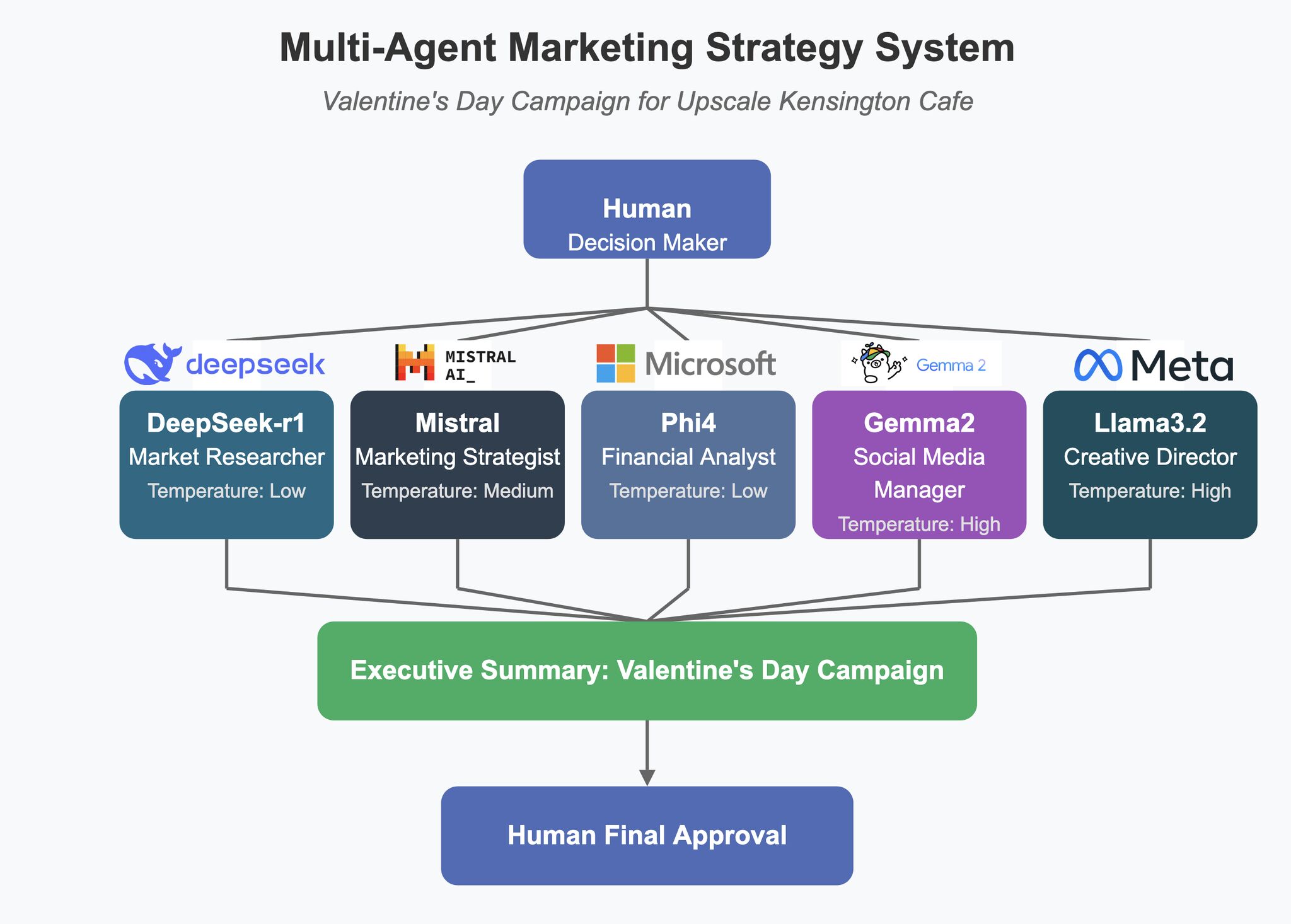Building A Multi-Agent System with CrewAI
I’ve been experimenting with CrewAI to build a specialized AI agent teams using only open-source LLMs.
Inspired by Viktoria Semaan’s Instagram reel about creating a multi-agent team of financial specialists for investment decisions, I took a different approach: while her system relies primarily on proprietary models like Claude from Anthropic, I wanted to explore what happens when we build a multi-agent system using only open-source LLMs - each optimized for specific tasks based on their unique strengths (see below). This approach could be particularly valuable for small to medium-sized businesses looking to deploy AI solutions internally without compromising sensitive data - prioritizing privacy and security (since these models run entirely locally without connecting to the internet).
For this experiment, I needed a real-world challenge to test my multi-agent system. Ivelina, a full-time content creator who manages over 2.5M followers across multiple social media accounts, suggested an intriguing task for me: creating a Valentine’s Day campaign for an upscale Kensington, London cafe targeting wealthy individuals. I then assembled a crew of my beloved AI agents to tackle this marketing challenge. Each agent was configured with task-specific temperature settings:
DeepSeek-r1 by DeepSeek AI due to its analytical powerhouse with fact-based reasoning
Mistral by Mistral AI due to its balanced analytical-creative capabilities
Phi4 by Microsoft as it excels at logical reasoning and mathematical precision
Gemma2 by Google as it is great at engaging, conversational content
Llama3.2 by Meta due to its sophisticated creative ideation
This ‘division of labor’ (drawing inspiration from Adam Smith’s notion of Division of Labor - a concept I deeply appreciated during my training as an Economist at the Hong Kong Baptist University) allows each agent to contribute its strengths. Meanwhile, as the Decision Maker, I maintain oversight of the final product, which is an executive summary bringing together all perspectives.
Though my initial findings are still preliminary and incomplete, I discovered several significant challenges during this experiment. First, running multiple models locally demands significant computing power. The models also lack access to real-time information, limiting their contextual awareness. Additionally, Shantanu - one of my fellow colleagues conducting research in Strategic Management at the Warwick Business School - aptly pointed out that evaluating individual agent performance within such a system remains complex during our conversation. These challenges present interesting opportunities for future refinement.
Has anyone else experimented with multi-agent systems using open-source models? What configurations have you found most effective?
